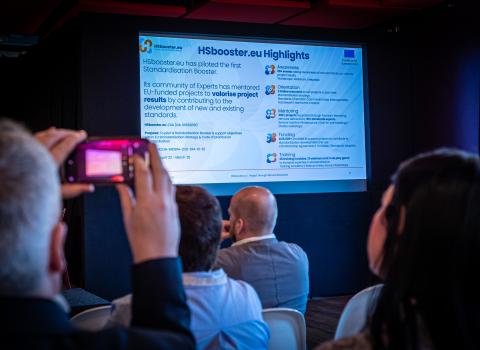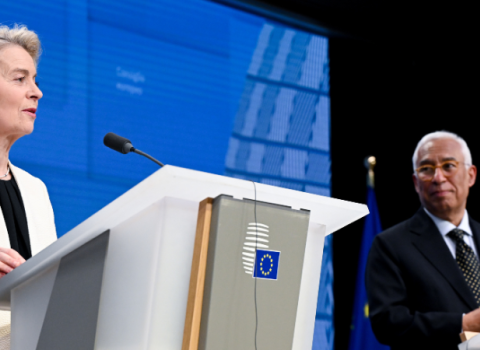After two years, adoption of the unitary patent by universities and small businesses exceeds expectations, but larger companies are hanging back

Photo credits: Antoine Schibler / Unsplash
Almost two years after the EU introduced the unitary patent, adoption by Europe’s small businesses and universities is running ahead of expectations. More than 57% of patents granted in this sector in 2024 requested unitary patent protection, which covers 18 EU member states in a single application.
According to the latest figures from the European Patent Office, unitary protection was requested for 25.6% of all European patents it granted in 2024, and for 36.5% of patents owned by European organisations.
The number of requests in the first two years has “exceeded all expectations,” said EPO spokesperson Luis Berenguer. Earlier this month, the EPO reached 50,000 requests.
According to Paul England, senior counsel at international law firm Taylor Wessing, the rate of uptake by universities and SMEs is “exceptional” and represents “a big vote of confidence” in the unitary patent. “It is also a very positive reflection on the Unified Patent Court itself, because these patents can only be enforced and defended in this new court,” England told Science|Business.
The unitary patent is based on the European Patent Convention (EPC). Once an EPC patent has been granted, ‘unitary effect’ can be requested for the EU member states participating in the system. This currently means the 18 countries that have ratified the agreement. Seven more are expected to sign in the coming years, with only Spain and Croatia among the EU states opting out completely. Non-EU countries, notably the UK and Switzerland, are excluded from the unitary patent.
Where an EPC patent has to specify the countries in which it applies, and pay fees accordingly, a unitary patent is automatically protected in the signatory countries for a single fee. Any challenges to a unitary patent go through the Unified Patent Court rather than national courts.
The idea behind the unitary patent is to make it cheaper and easier to get intellectual property (IP) protection in Europe, which in turn should encourage innovators to patent and market their technologies. “It is more cost-efficient, involving only one payment in one language,” said Berenguer.
Related articles
- The Ecosystem: innovators weigh pros and cons of Europe’s unitary patent
- Fifty years in the making: European unitary patent comes into effect
Cost savings
KU Leuven in Belgium was the second most active European university last year in terms of EPO patent applications. For 46 patents granted in 2024 where the university was the main applicant, it requested unitary effect for all but two, according to Ivo De Baere, IP officer at KU Leuven.
One of the reasons is the cost. Previously, the university would typically take protection in the UK, Germany, France, the Benelux countries and others depending on the technology. The unitary patent works out cheaper even though it offers wider protection, De Baere said.
A European patent also allows the university to keep its licencing options open. This may not be so important for established firms, which tend to focus on a few specific countries.
“Large companies know what they make and where the market is,” De Baere said. “We have a variety of technologies and products. We don’t know in advance where the product will be sold, what the biggest market is, and definitely not where the licensee comes from.”
This is reflected in the contrast between patents where KU Leuven was the main applicant, and those where it was a co-applicant. In the latter case, of 26 patents granted last year, only eight were unitary patents.
The EPO is not worried about the lower rate of uptake by large companies. “Larger enterprises often have more complex IP strategies and may take more time to integrate new tools like the unitary patent into their broader global protection plans,” Berenguer said.
And many large multinationals are already using the system. The top applicants in 2024 were Siemens, Johnson & Johnson, Samsung and Qualcomm.
Defending a unitary patent can also be done in one proceeding, avoiding the need for multiple teams of national lawyers. However, this can sometimes be a reason for reticence. Uptake is relatively low in the small molecule pharmaceuticals sector, for instance, because products tend to be protected by just one or two patents. “The risk of losing across the whole of the Unified Patent Court countries in one case is therefore unattractive,” England said.
However, pharmaceutical actions are being filed as confidence in the court builds, and England expects this to be reflected in the adoption of unitary patents.
Meanwhile, the 2024 figures show no impact, yet, for that year’s reduction in application fees for small entities, including universities and public research organisations. Overall, 22% of patent applications in 2024 originating in Europe came from individual inventors or SMEs, and 7% came from universities and public research organisations, much the same as in 2023.
The EPO report also reflects evolving innovation trends. Computer technology, including artificial intelligence, registered the highest number of patent applications for the first time in 2024, with 16,815 out of 199,264 applications.





 A unique international forum for public research organisations and companies to connect their external engagement with strategic interests around their R&D system.
A unique international forum for public research organisations and companies to connect their external engagement with strategic interests around their R&D system.